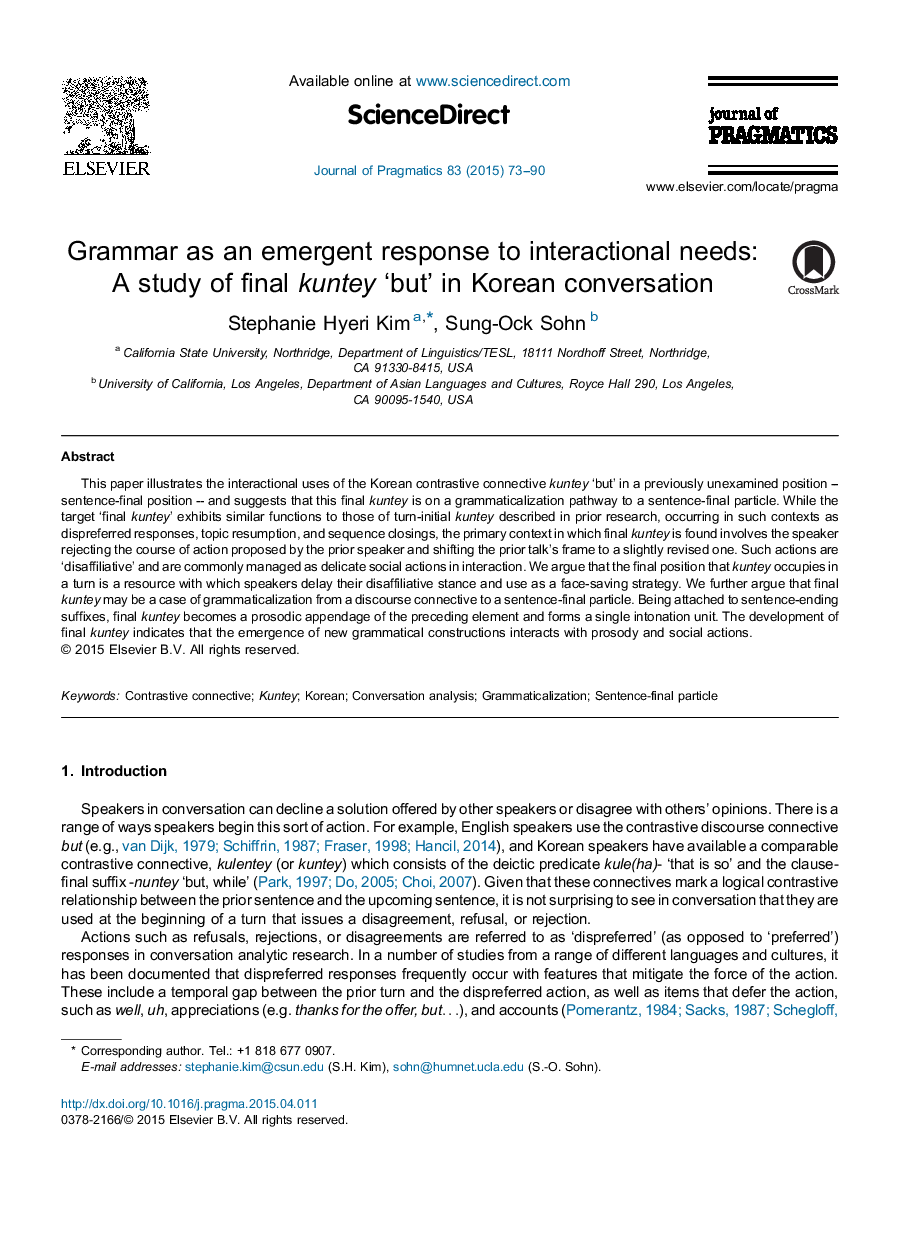| Article ID | Journal | Published Year | Pages | File Type |
|---|---|---|---|---|
| 932613 | Journal of Pragmatics | 2015 | 18 Pages |
This paper illustrates the interactional uses of the Korean contrastive connective kuntey ‘but’ in a previously unexamined position – sentence-final position – and suggests that this final kuntey is on a grammaticalization pathway to a sentence-final particle. While the target ‘final kuntey’ exhibits similar functions to those of turn-initial kuntey described in prior research, occurring in such contexts as dispreferred responses, topic resumption, and sequence closings, the primary context in which final kuntey is found involves the speaker rejecting the course of action proposed by the prior speaker and shifting the prior talk's frame to a slightly revised one. Such actions are ‘disaffiliative’ and are commonly managed as delicate social actions in interaction. We argue that the final position that kuntey occupies in a turn is a resource with which speakers delay their disaffiliative stance and use as a face-saving strategy. We further argue that final kuntey may be a case of grammaticalization from a discourse connective to a sentence-final particle. Being attached to sentence-ending suffixes, final kuntey becomes a prosodic appendage of the preceding element and forms a single intonation unit. The development of final kuntey indicates that the emergence of new grammatical constructions interacts with prosody and social actions.
